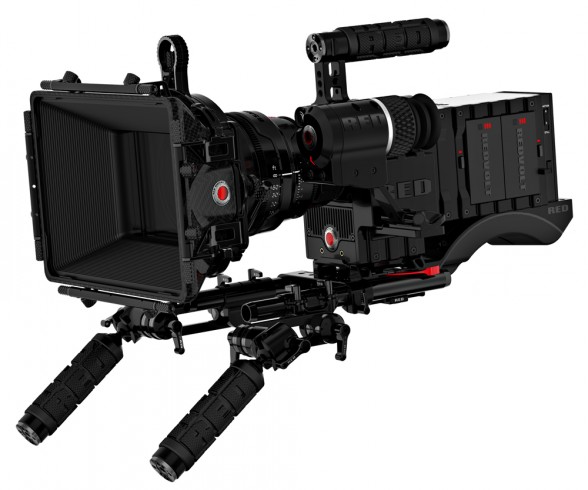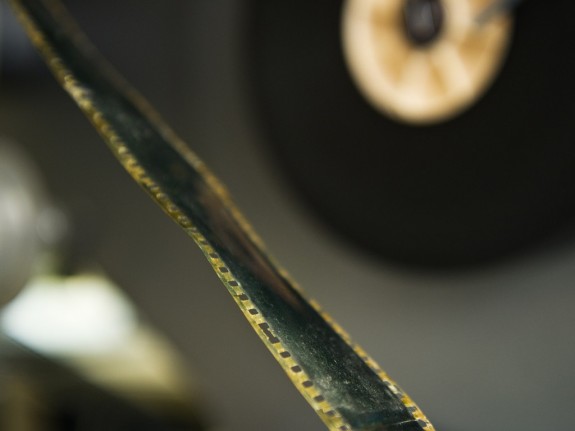The Future Of Film: Can We Even Call It That Any More?
The evolution of cinema, or the humble “film”, is about to change – if it hasn’t fundamentally already. It’s got to the stage where I think calling our favorite medium “film” is a misnomer – because film as we know it is going the way of the dodo. As we fully embrace the digital age, where film-makers such as James Cameron, Peter Jackson and even now Steven Spielberg have crossed into using a completely digital workflow (Spielberg has held out longer than most, but it’s only a matter of time), calling it “a film” is no longer truthful.

Ladies and Gentlemen, I think we’ve reached a turning point. The evolution of cinema, or the humble “film”, is about to change – if it hasn’t fundamentally already. It’s got to the stage where I think calling our favorite medium “film” is a misnomer – because film as we know it is going the way of the dodo. As we fully embrace the digital age, where film-makers such as James Cameron, Peter Jackson and even now Steven Spielberg have crossed into using a completely digital workflow (Spielberg has held out longer than most, but it’s only a matter of time), calling it “a film” is no longer truthful. Much like the default “save” icon on your computer uses a now defunct image of a floppy disc, calling a movie a film will eventually confuse the younger generation who will grow up under the impression that movies are shot completely digitally.
Let’s face it, film has been fighting a losing battle for years. Even Kodak, the world-renowned company who gave us all unforgettable memories thanks to their cameras and film stock, haven’t been able to stem the tide of the digital age, an age which has seen cheaper and cheaper costs associated with even the most high-end movie-making and photography. Movie makers can now shoot a major motion picture on a camera you and I could buy with several thousand dollars at any electronics store. Many motion pictures can be edited on a home PC these days, such is the power of computers. You don’t need to be a millionaire to make a feature film (although it helps) and have it be a success. Thanks to digital technology, you can shoot, edit, post-process, and show in cinemas without your movie coming anywhere near a roll of film.

While the purists may rail against this Star Trek mentality, I’m actually quite excited to see what the future holds in terms of how movies will be made and distributed. The days of the studio system have long since vanished, with more and more independent companies developing and producing quality projects not only in Hollywood, but across the globe. The European and Asian film industries dwarf the output of Hollywood, and burgeoning cottage industries in New Zealand – led by Peter Jackson – and Australia are trying desperately to catch up, with varying degrees of success. The reason these places are able to produce so many is not only large populations, but also diminished costs, leading to an explosion of creativity in these regions the likes of which we’ve not seen in generations.
While I’ve long been outspoken against the increasing desire to 3D-ize everything, and in fact can’t stand the way 3D is marketed as a storytelling tool, the fact that the technology is developing so fast and allowing movie-makers further options to display and create their stories is actually a joy. Peter Jackson’s decision to shoot his upcoming Hobbit movies at a faster 48 frames per second, something which would have been incredibly costly with traditional film, to provide a smoother, more seamless viewing experience, is only the first in a series of leaps the industry is going to make that will truly see the Digital Age become the standard, rather than the exception. James Cameron’s remarkable development of 3D technology for Avatar, along with the groundbreaking CGI, made industry pundits sit up and take notice; a brave new era of pioneering movie-making had arrived.

The last bastions of film technology, which has provided us with decades of entertainment, will fall by the wayside as the future unfolds; sharper cinema projection, without the diminished quality of a 4th or 5th generation film print making its way to the backalleys of southern Brazil, as well as added channels of surround sound enhancing the aural experience, will ensure that cinema holds sway over television for a long time to come. But calling it “film” feels wrong. It’s no longer an industry dominated by film. It’s all pixels and gigabytes. The quality of a visual effect is no longer about a photochemical reaction on a 3-strip film stock, but the processing power of something built for thirty cents in Taiwan.
So what do we call a movie when we’re not calling it a film? Even a “movie” is a derivative from the term “moving picture”, which was referenced by the 24 frames of film per second pulled through a cinema projector. Sure, movies are still “moving pictures”, but nowadays the prevalence is for digital projection and picture-perfect presentation every single time. No scratched film prints for us these days. As an audience used to Blu-Ray and DVD, we’ve come to expect an always perfect cinema presentation every time we go (sure, we don’t always get it, but it’s the expectation) and digital is definitely the way to go to achieve that.
Although I still don’t like 3D. I respect the tech, but I don’t have to enjoy it. The question still stands, though. What will generations to come call a “film” when film itself is no longer in use?






Well, given the pace of change (which seems to get more dramatic each year for those aged over 30), we gotta be reasonably flexible … Oscar winner Hanks was describing a film that was made in 2012; Dickens died in 1870 – surely some semantic compensation can be made for the intervening 142 years, particularly when it comes to one of art's most flexible mediums …
I'm still gonna call them "movies"…. And my wife tells me I'm nothing if not flexible…. 😉
Continuing on, there's a brief article about Cloud Atlas in this weekend's Oz where Tom Hanks uses the term "cinematic literature". To be sure, saying "I'm going to watch some cinematic literature" or asking someone "Would you like to consume some cinematic literature with me?" may be a little more cumbersome than declaring something like "I'm going to the cinema" or popping the question "Do you wanna go and see a movie?", but it still provides a generic alternative title for a medium that is becoming more digitally diverse as we grow older.
The phrase "cinematic literature" makes me think of going to a library to watch old 70's and 80's Dickens movies.
Haven't seen Cloud Atlas yet, but I so want to….
I think you answered the question in your spiel – it'll be CINEMA … the term "film" will describe the esoteric independent stuff that people like Stan Brakhage used to make (and which only a handful of people will want to watch).
But really, looking back, hasn't it always been cinema? Putting the obvious aside, who can forget Benot Poelvoorde in Man Bites Dog as he drunkedly roams the streets, wearing a dog collar, singing an improvised song that is obviously part homage to French filmmakers with the chorus "Cinema, CINEMA ….."?
Plus, where will future movie buffs go to watch new release "films". Not the drive in, but THE CINEMA!!!
See, even then, I doubt "cinema" will be around much longer in the format it's in too, Mark. With rising prices and the gouging of alternative platforms on which to watch movies, the humble multi-screen megaplex is going to become something of a dinosaur in the future – not now, but probably within the next twenty to thirty years at least. But you're right, let's continue to call it "cinema" for as long as we can!!